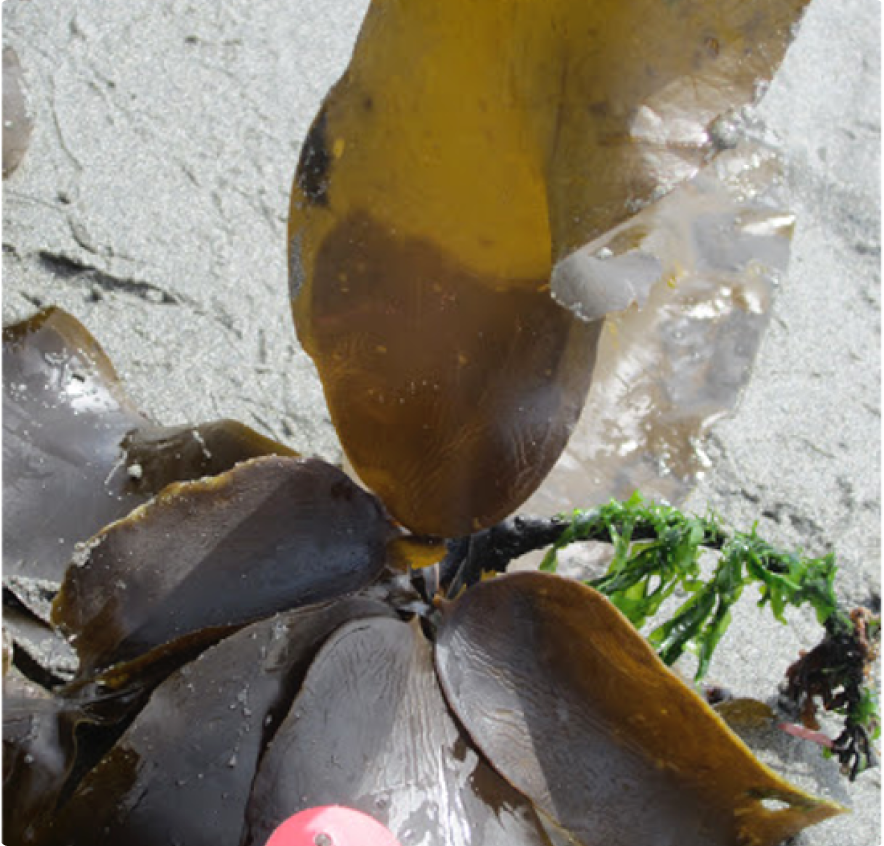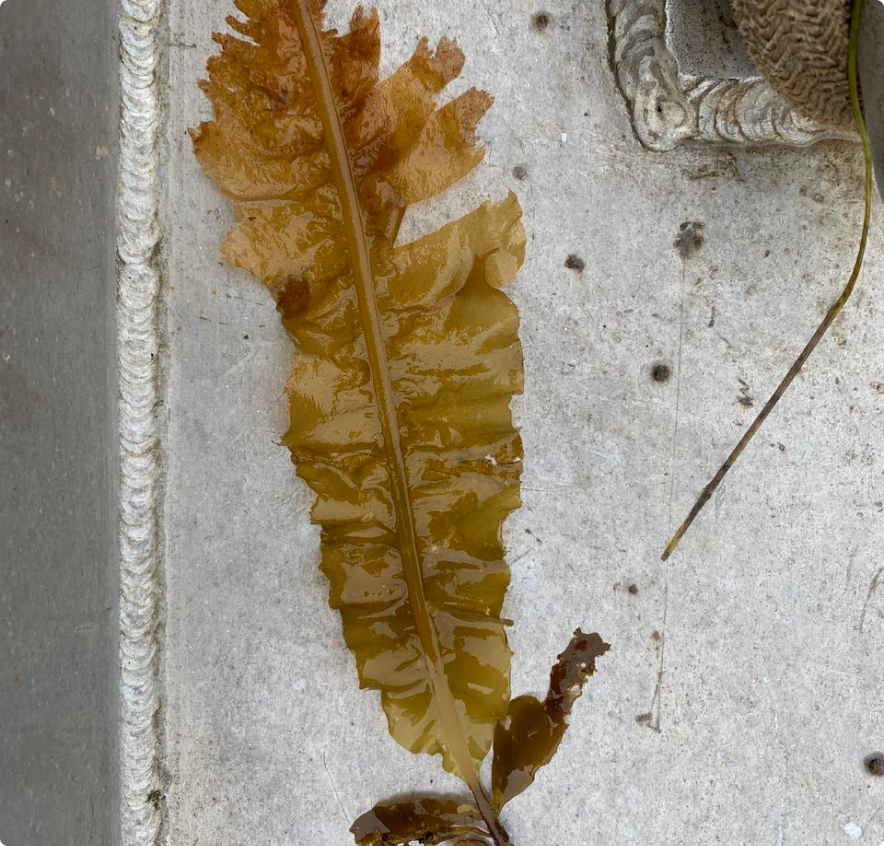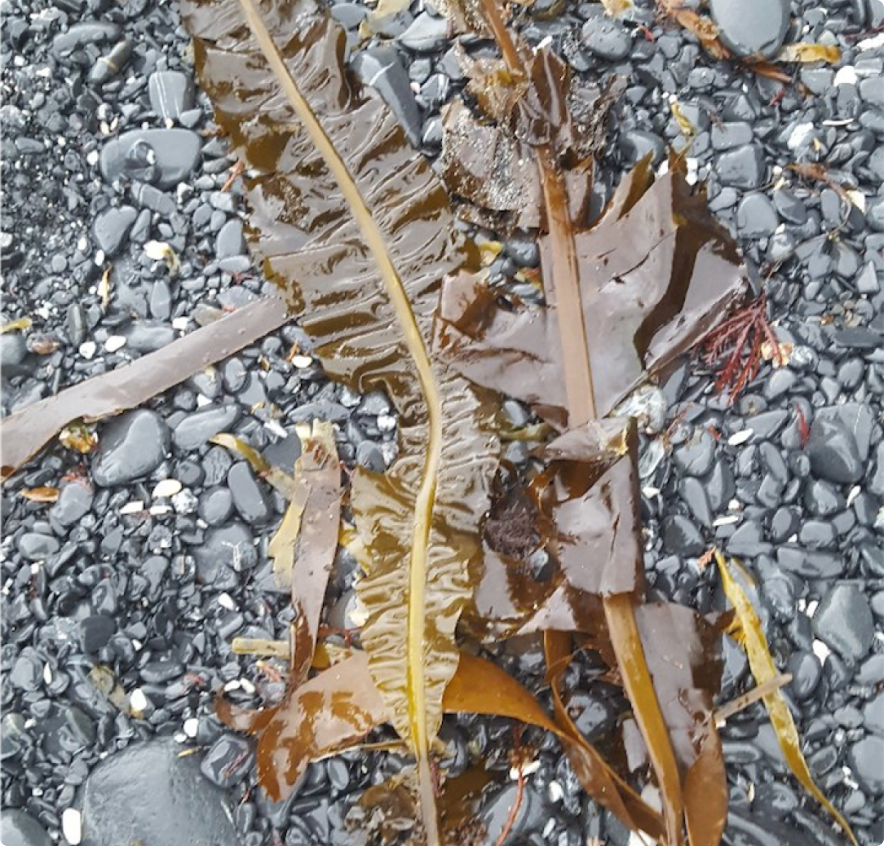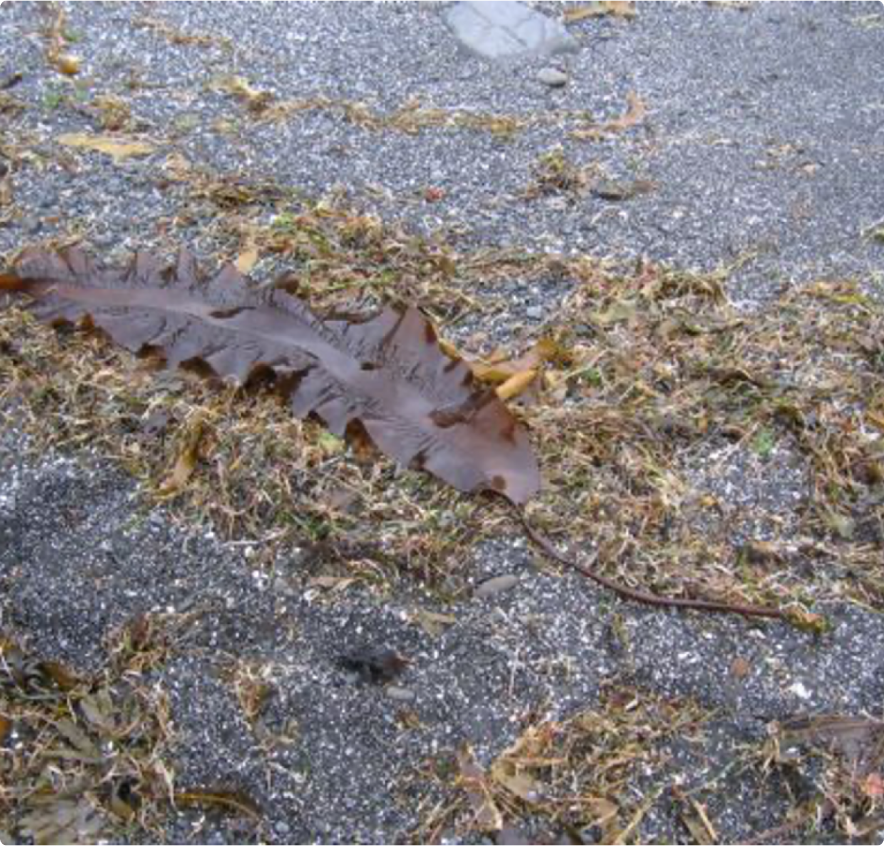Leathery midrib down the center of the blade
Back to: Sorus Collection
Alaria marginata, or ribbon kelp, is a species farmed in Alaskan waters.
Alaria marginata develops its sorus tissue on the sporophylls at its base. The sorus tissue develops from the holdfast out towards the tip of the sporophyll. In Alaska, Alaria tends to be fertile from June to October. Sometimes, late in the season, you may only see the sporophylls attached to the holdfast on the substrate, and the long blade will have detached or deteriorated, but there may still be fertile material on the sporophylls.


-
-
Multiple sporophylls at the base near the holdfast
-
Lives in the mid to low intertidal zone
-
Likes strong currents and areas of high exposure
Ribbon kelp has a look-alike species called broad-ribbed kelp (Pleurophycus gardneri).
This species also has a leathery midrib, which can be a point of confusion. The blade tends to be slightly flatter and smoother than a ribbon kelp blade. The main difference is that broad-ribbed kelp does not produce sporophylls at the base. This is the defining difference to look for. It’s also found much lower in the tidal zone than Alaria marginata.
Click on the blinking green buttons below to learn more about Alaria anatomy.

